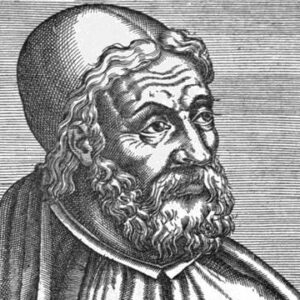Greek-Egyptian mathematician, astronomer, astrologer, and author Claudius Ptolemy was also a writer. He produced a number of scientific treatises while residing in Alexandria in the Roman province of Egypt during the second century, three of which had a significant impact on the advancement of Byzantine, Islamic, and European science in succeeding years. Christopher Columbus, an Italian explorer, used one of his treatises on geography as the blueprint for his westward journey to Asia several centuries later. The treatise covered the geography of the Greco-Roman world in detail. Ptolemy’s only known characteristics are that he was a citizen of Rome, lived in Alexandria, and wrote in Koine Greek. What trustworthy information there is about him today has been inferred from the writer’s still-existing works. He wrote the influential book “Almagest,” which is a treatise on the apparent motions of the stars and planetary routes, and was a well-known astronomer of his time. Its geocentric model was accepted for more than 1200 years after its inception, making it a highly significant scientific literature. He described what is now known as the Ptolemaic system in another astronomical work. Despite the fact that his genius is universally acknowledged, some of his astronomical findings have come under scrutiny by academics in recent decades.
Early Childhood & Life
The details of Claudius Ptolemy’s birth and family are not well documented. He is usually accepted to have been born in Egypt during the Roman Empire’s 100 AD. As implied by his Latin name, Claudius Ptolemaeus, he was of Greek ancestry.
In an unsupported claim, the 14th-century astronomer Theodore Meliteniotes identified Ptolemy’s birthplace as Ptolemais Hermiou in the Thebaid. But it is generally accepted that he was born in Alexandria, where he is thought to have lived and passed away.
Ptolemy’s Later Life
Claudius Ptolemy became an accomplished mathematician, astrologer, astronomer, and writer as he grew older. Ptolemy wrote multiple scientific treatises, and the dates specified in his surviving works have allowed us to determine the order in which they were written.
The astronomical book that is now known as the “Almagest,” although it was originally known as the “Mathematical Treatise,” was his first significant contribution. It was finished in or about 150 AD. The foundational work was divided into 13 sections, each of which addressed a significant topic.
The “Almagest” was a lengthy work that included an overview of Aristotle’s cosmology as well as information on the length of the year, the motions of the Sun, Moon, and other fixed stars and planets, as well as lunar parallax and the motion of the moon’s apogee.
Ptolemy used Hipparchus’ solar model, which was just an eccentric deferent, to draw his models. He had received a geometrical toolkit and a rudimentary collection of models for forecasting the positions of the planets in the sky from his Greek forebears.
How much of the “Almagest” is truly original is unknown. Even though it was a significant work of science, some academics have questioned its authenticity of it over the years and the reliability of Ptolemy as a heavenly body observer.
He wrote the “Geographia” or “Cosmographia,” a notable treatise on mapping that compiled the geographic knowledge of the Roman Empire in the second century. He used gazetteers from the Roman and ancient Persian Empires as well as older geographer Marinos of Tyre’s writings for this study. In this essay, he also quoted Hipparchus, an early astronomer.
He developed improvised approaches for producing maps and shared his expertise in his writings. He was familiar with two different ways to portray the latitude and longitude circles on a flat map using a grid of lines, and he noted longitudes and latitudes in degrees for about 8,000 sites on his world map.
He was also an astrologer who thought astrology was valid if imprecise, science. He took an extremely practical approach to astrology, believing that it could be helpful in certain circumstances but should not be relied upon exclusively.
He wrote a book called “Tetrabiblos” which was regarded as an authoritative work on the philosophy and practice of astrology for many years. The work, which was included in the curricula of universities during the Renaissance, is credited with outlining the fundamental principles of Renaissance astrology. Also stated to be “by far the most influential source of medieval Islamic astronomy,” the treatise.
Ptolemy had a strong interest in music as well, and he wrote a book called Harmonics on music theory and its mathematical foundations. He wrote about how musical notes may be converted into mathematical equations and vice versa, and he pushed for basing musical intervals on mathematical ratios.
He is also credited with writing a treatise on optics. In this important contribution to the early history of optics, he wrote about the characteristics of light, such as reflection, refraction, and color.
Claudius’s Bigger Works
One of the best scientific texts ever written is Ptolemy’s “Almagest.” It is a key resource for knowledge about ancient Greek astronomy, and its geocentric paradigm was adopted more than 1200 years after it was first proposed. Over the decades, it was translated into a number of languages.
He supplied latitude and longitude coordinates for several locations and geographical features around the world in his foundational work on cartography, “Geographia.” He also enhanced the processes used to make maps.
He wrote “Tetrabiblos,” a book on the theory and practice of astrology, in which he discussed the study of how cosmic cycles affect things on Earth. This important book was copied, condensed, and translated into numerous languages over the centuries.
Personal Legacy & Life
Few trustworthy sources exist for information about Claudius Ptolemy’s private life. It is certain that he was born, raised, and died in Alexandria about the year 170 AD.
Both the asteroid 4001 Ptolemaeus and the Ptolemaic crater on Mars bear his name. He is also remembered through the Ptolemy Stone, which is used in math classes on both St. John’s College campuses.
Estimated Net Worth
Unknown.


